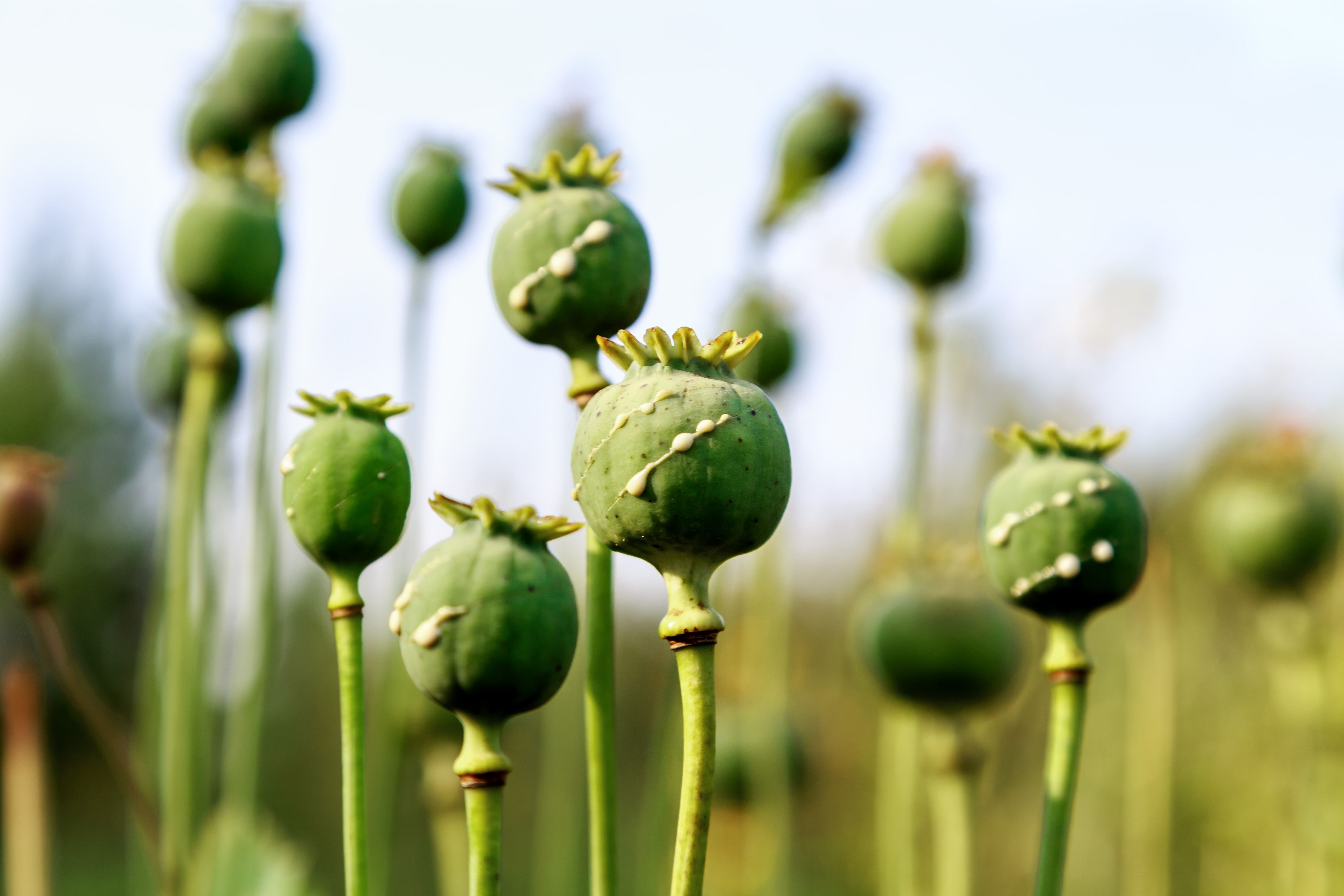Opium and Hashish Tested Using Laser-Induced Fluorescence Spectroscopy
Scientists from the Amirkabir University of Technology in Tehran, Iran, used laser-induced fluorescence (LIF) spectroscopy to analyze opium and hashish. Through this research, which was published in Spectrochimica Acta Part A: Molecular and Biomolecular Spectroscopy, the scientists explored a novel method of drug analysis (1).
poppy heads with drops of opium milk | Image Credit: © KPad - stock.adobe.com

Opium, which comes from the opium poppy, is the source of many narcotics, including morphine and codeine. Hashish is made from the resin of the cannabis plant. Cannabis is one of the most common psychoactive drugs, due to its psychoactive components: delta-9-tetrahydrocannabinol (THC), cannabinol (CBN), and cannabidiol (CBD).
Opium and hashish are optically dense multi-fluorophore samples and contain fluorophores of unknown concentrations. This makes it difficult for conventional fluorescence measurement tools to analyze these substances. In this study, the researchers used LIF to properly characterize the properties of both opium and hashish.
LIF is often praised for its simplicity, quickness, and portability, making it a practical method of drug identification. In this study, LIF was extensively examined to overcome drawbacks of obtaining specific fluorescence parameters as a novel method of drug analysis. The spectroscopy process was carried out at a single-line excitation of 405 nm over a wide range of concentrations to obtain three distinctive fluorescence parameters (k, α and Cp) based on the modified Beer-Lambert (MBL) formalism.
The typical α value was determined to be 0.30 and 0.15 mL/(cm∙mg) for opium and hashish, respectively. Similarly, typical k is obtained ar 0.390 and 1.25 mL/(cm∙mg), respectively. Furthermore, the concentration at max fluorescence intensity (Cp) was determined for opium and hashish to be 1.8 and 1.3 mg/mL, respectively. These results show that using this method, opium and hashish create their own characteristic fluorescence parameters.
Reference
(1) Shamsi, E.; Parvin, P.; Ahmadinouri, F.; Khazai, S. Laser-induced fluorescence spectroscopy of plant-based drugs: Opium and hashish provoking at 405 nm. Spectrochim. Acta A Mol. Biomol. Spectrosc. 2023, 302, 123055. DOI: https://doi.org/10.1016/j.saa.2023.123055
Newsletter
Get essential updates on the latest spectroscopy technologies, regulatory standards, and best practices—subscribe today to Spectroscopy.
Tracking Molecular Transport in Chromatographic Particles with Single-Molecule Fluorescence Imaging
May 18th 2012An interview with Justin Cooper, winner of a 2011 FACSS Innovation Award. Part of a new podcast series presented in collaboration with the Federation of Analytical Chemistry and Spectroscopy Societies (FACSS), in connection with SciX 2012 ? the Great Scientific Exchange, the North American conference (39th Annual) of FACSS.
New Study Expands Nickel Autoionization Spectra to Advance Laser Isotope Separation Technologies
July 17th 2025Researchers at China’s National Key Laboratory have identified 170 nickel autoionization states using resonance ionization mass spectrometry, significantly advancing the spectral database critical for laser isotope separation and atomic spectroscopy.
Evaluating Microplastic Detection with Fluorescence Microscopy and Raman Spectroscopy
July 2nd 2025A recent study presented a dual-method approach combining confocal micro-Raman spectroscopy and Nile Red-assisted fluorescence microscopy to enhance the accuracy and throughput of microplastics detection in environmental samples.
Machine Learning and Optical Spectroscopy Advance CNS Tumor Diagnostics
July 1st 2025A new review article highlights how researchers in Moscow are integrating machine learning with optical spectroscopy techniques to enhance real-time diagnosis and surgical precision in central nervous system tumor treatment.